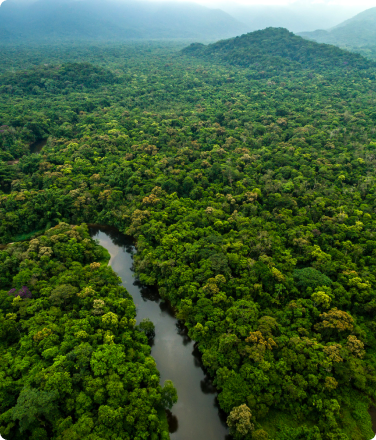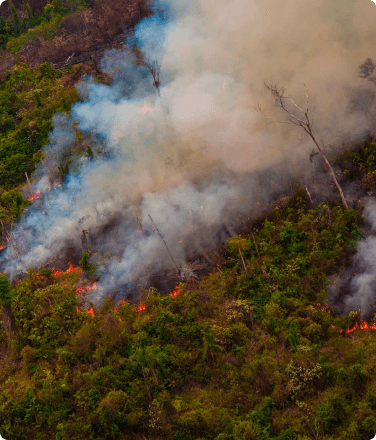Ticuna fishermen early morning on the Amazon River.
IMAGE CREDIT: Mauricio Velez-Dominguez
Increased funding for forest communities can transform global climate and biodiversity efforts—but reimagining how is critical.
Ongoing challenges have prevented funding from going directly to indigenous peoples and local communities in tropical forests who are key to combating the climate crisis. In a new briefing, the Rainforest Foundations of the UK, US, and Norway come together to outline key steps to ensuring climate and biodiversity funding gets to the frontlines.
Mounting scientific evidence demonstrates that indigenous peoples and other local communities (IPLCs) who own and manage their own territories are more effective than national parks, conservation areas, and nature reserves in protecting forests and biodiversity and upholding local development. But historically, international climate funding—critical to combating the climate crisis—rarely makes it into the hands of the indigenous communities and local organizations stewarding these lands.
In fact, a 2021 report by Rainforest Foundation Norway found that international support to IPLCs’ tenure and forest management in tropical forest countries was less than one percent of the total funding for climate mitigation and adaptation over the past decade. Moreover, only a fraction of that support actually reached frontline indigenous organizations.
In November 2021, several public and private funders united under a $1.7 billion IPLC Forest Tenure pledge during COP26 in Glasgow, marking a dramatic shift in commitments to scale up support for IPLC land and resource rights.
While this pledge is welcome news, it is still unclear how funding will reach local organizations and communities. Historically, donors have inquired about IPLCs’ absorptive capacity and have been wary of potentially weak administrative structures and high transaction costs. Over time, this has fuelled an unsustainable and inequitable funding model dominated by large international agencies that may have the internal systems to meet increasingly risk-averse and compliance-heavy requirements of institutional donors, but that often lack the legitimacy, connections, and skills to understand the needs of forest communities and obtain real results. This outdated model diverts resources that could otherwise be transformative to indigenous organizations and local civil society, creating missed opportunities to develop lasting, efficient, strategic partnerships.
The Rainforest Foundations*—with 30+ years of experience in rights-based rainforest protection across 16 tropical forest countries—recognize these challenges and have drafted a paper outlining some of the key steps needed to redirect climate and biodiversity funding to those on the frontlines who are best able to combat the current climate crisis.
Some of these steps include:
- Reimagine traditional funding mechanisms to better serve IPLCs through:
Providing political support for indigenous-led funding initiatives; expanding the definition of “acceptable risk”; and creating an environment where IPLCs can choose the intermediaries they work with. - Invest in building capacity of IPLC organizations to maximize their impact and their capacity to manage funds, by:
Incorporating capacity building programming into existing projects that reflects the needs and objectives of local partners and is rooted in supporting their growth. - Scale up support for transformative solutions that address the root causes of environmental destruction, such as:
Securing, expanding, and defending land rights for IPLC territories; addressing the drivers of deforestation (i.e. commodities such as cattle derived products, soy, palm oil as well as extractive industries or narcotrafficking); and ensuring that climate projects respect the rights of IPLCs by adhering to Free, Prior, and Informed Consent (FPIC).
You can read the full report here.
*About the authors
The Rainforest Foundations—Rainforest Foundation Norway, Rainforest Foundation UK, and Rainforest Foundation US—are sister organizations and partners that operate under a shared mission. With more than 30 years of on-the-ground experience, we recognize that social justice and indigenous rights are necessary preconditions for enduring forest protection. Together, we have over 100 long-term indigenous and other local partners throughout the Amazon, Congo Basin, Indonesia, Papua New Guinea, and Central America, and collectively, we provide technical assistance and tens of millions of dollars in direct support annually to local organizations for rights-based forest protection. We support indigenous peoples and local communities in protecting more than 84 million hectares of tropical rainforest, a forest area roughly the size of France and England combined.








